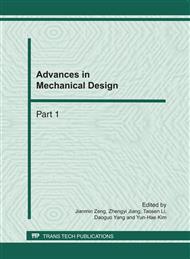p.891
p.895
p.899
p.905
p.909
p.913
p.922
p.927
p.931
A Method of Signal-Noise Separation from Measured Vibration Response Signals
Abstract:
Measured vibration response signals are inevitably contaminated with noise originating from test environment as well as electronic devices. This situation often leads to serious difficulties in many applications as they require high-quality measured data. This paper presents a signal-noise separation method for measured impulsive response functions (IRFs) based on structured low rank approximation (SLRA). The proposed method was tested with a steel cantilever beam, which was subjected to impulsive excitation. Gabor transform was also employed to process measured signals. The results show that this method can give a reliable separation of signal and noise, which will enhance the accuracy of various applications that rely on measured signals.
Info:
Periodical:
Pages:
909-912
Citation:
Online since:
February 2011
Authors:
Price:
Сopyright:
© 2011 Trans Tech Publications Ltd. All Rights Reserved
Share:
Citation:


